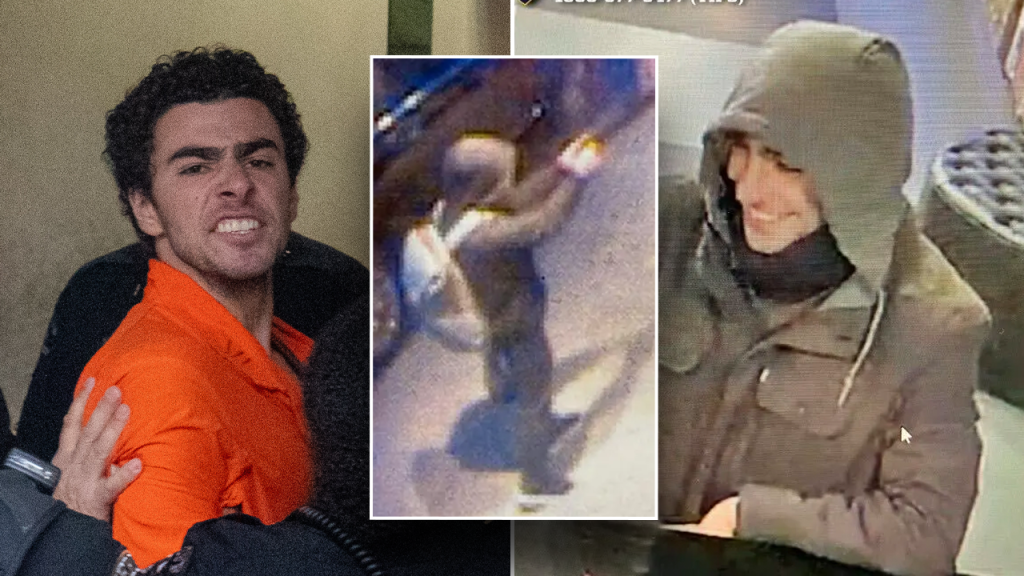Luigi Mangione’s journey from an alleged charismatic charmer to a murder suspect, as reflected through his shifting body language, offers a chilling glimpse into a potentially fractured psyche. His public appearances, particularly his perp walk, paint a stark contrast to the image of a sociable, engaging individual described by those who knew him. Body language expert Susan Constantine analyzes Mangione’s demeanor, highlighting the subtle cues that betray a complex internal struggle. His rigid posture, coupled with a swiveling head and wide eyes, suggests a deep-seated fear, a natural response to his precarious situation. However, interwoven with this fear, Constantine observes a contradictory arrogance, manifested in a slight chin raise and a downward gaze, almost as if looking down upon his surroundings. This duality, she posits, might stem from a perceived grievance, a sense of being wronged, potentially fueled by an adopted radical belief system that compels him to act. The complexities of his character are further revealed in the contrasting expressions captured in different photographs.
Mangione’s mugshots, both in the orange jumpsuit and the blue smock, exhibit a raised chin and prominent Adam’s apple, which Constantine interprets as signs of pride, arrogance, and a militant demeanor. This starkly contrasts with the smiling, flirtatious image of Mangione interacting with a hostel employee before the alleged murder. This earlier photograph, Constantine notes, depicts the charismatic, engaging personality described by his friends and family, a persona seemingly devoid of fear or malice. The dramatic shift in demeanor suggests a compartmentalized personality, a phenomenon Constantine refers to as “cubing.” This theory posits that individuals like Mangione can disassociate, adopting different personas depending on the situation. The charming, sociable Mangione seen in the hostel photograph is replaced by a rigid, tense figure during his perp walk, his lifted cheeks now drooping, his expression reflecting a sense of finality – a “game over” look. This ability to compartmentalize, to separate the sinister from the sociable, could be key to understanding the alleged transformation from charming acquaintance to accused killer.
The surveillance footage of the shooting itself reveals yet another facet of Mangione’s personality – a controlled, focused individual. Constantine argues that his confident stance and lack of surprise during the incident point to premeditation. The calmness and lack of startle suggest a rehearsed plan, a carefully calculated act rather than a spontaneous outburst. His lowered countenance and focused energy further support this theory, indicating a state of hyper-focus, indicative of someone executing a predetermined plan. This deliberate, calculated demeanor stands in stark contrast to the outward display of fear and arrogance observed during his perp walk. The contrasting presentations of self paint a picture of a complex individual capable of carefully concealing his intentions.
Further reinforcing the theory of premeditation is Constantine’s analysis of Mangione’s body language in a holding cell photograph taken before his court appearance. His rigid, upright posture and militant demeanor, she suggests, are indicative of someone caught off guard, someone who did not anticipate being apprehended. This rigidity, she explains, is a common behavioral signature of deception, a subconscious attempt to maintain control and composure in a stressful situation. This observation suggests that Mangione likely believed he would evade capture, further supporting the notion of a planned attack. The various pieces of evidence, when combined, begin to form a narrative of a man capable of meticulous planning and deceptive charm, a dangerous combination that allowed him to allegedly carry out a violent act while maintaining a facade of normalcy.
The dramatic shift in Mangione’s demeanor, from charismatic acquaintance to accused killer, underscores the complexity of human behavior and the challenges in understanding the motivations behind violent acts. His body language, analyzed by an expert, reveals a multifaceted personality capable of compartmentalization, deception, and calculated violence. The contrasting images of a smiling, flirtatious individual and a rigid, fear-filled suspect highlight the potential for hidden depths and the difficulty in discerning true intentions. The case of Luigi Mangione serves as a chilling reminder of the deceptive nature of appearances and the importance of considering the totality of evidence when attempting to understand complex human actions.
The analysis of Mangione’s body language provides a valuable lens through which to examine the potential motivations and mindset of the accused. While it does not offer definitive proof of guilt, it does provide compelling insights into the complexities of his character and the possibility of a carefully constructed facade. The contrasting images of Mangione – the charmer, the killer, the fearful suspect – collectively paint a picture of a deeply troubled individual capable of both calculated violence and deceptive charm. The ongoing investigation will undoubtedly shed further light on the events leading up to the tragic death of Brian Thompson, but the analysis of Mangione’s body language offers a crucial piece of the puzzle, highlighting the importance of non-verbal cues in understanding human behavior, particularly in cases of alleged criminal activity.

